Last Chance to Catch NYC's Holiday Notalgia Train
We met the voices of the NYC subway on our nostalgia ride this weekend!


Buried in the annals of history, there is a somewhat forgotten piece of opulence related to the first subway line in New York City, the Interborough Rapid Transit (IRT). We recently came across references to a private subway car, the Mineola, commissioned by August Belmont Jr., the President of the IRT and one of its main financiers, for his own private use.
Custom made by the Wason Manufacturing Company in Massachusetts, the Mineola was wood paneled on the inside with a kitchen galley, servants call system, toilet, electrical heating, a fancy desk for Belmont and a place for repose. Belmont used the Mineola to entertain guests and would go from the Hotel Belmont, designed by Warren & Wetmore as part of Grand Central’s Terminal City complex, on a private track to Grand Central and on to his racetrack at Belmont Park. An agreement with the Long Island Railroad for transfers at Atlantic Yards gave him access to anywhere along the Eastern seaboard.
Immediately when we read about this wonder, we needed to know what happened to it. It was in use until sometime after 1924, following Belmont’s death, then lost in a Bronx car yard. Rediscovered in the 1940s, miraculously mostly intact, it sold for scrap and ended up in a New Jersey backyard. It spent some time in a museum in Philadelphia where it was almost lost to a flood, and was acquired by the Shoreline Trolley Museum in Connecticut in 1973.
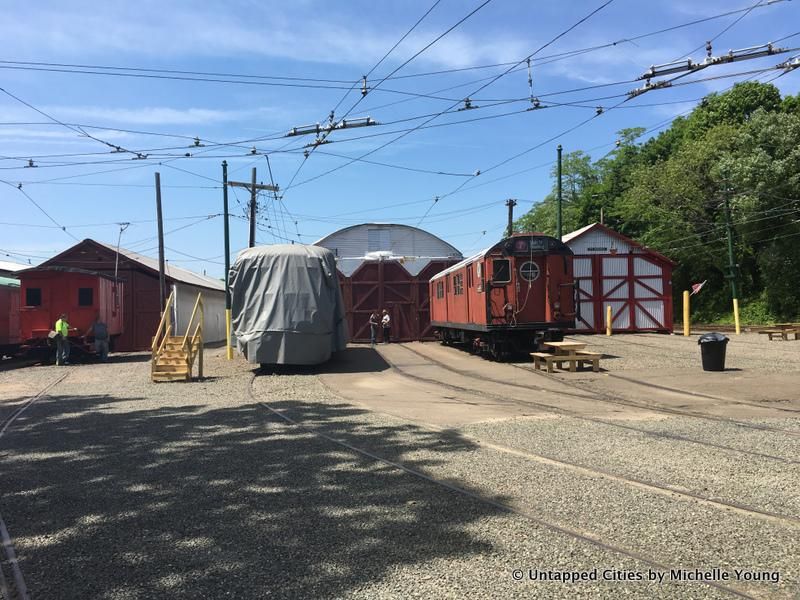
A 2001 New York Times article noted that the subway car was still at the Shoreline Trolley Museum and we gave them a call. We were warned repeatedly that the car was in bad shape, particularly after damage from both Hurricane Irene and Sandy, but we were undeterred. Just to touch, perhaps stand inside, this piece of history would be enough – and that’s what we did.
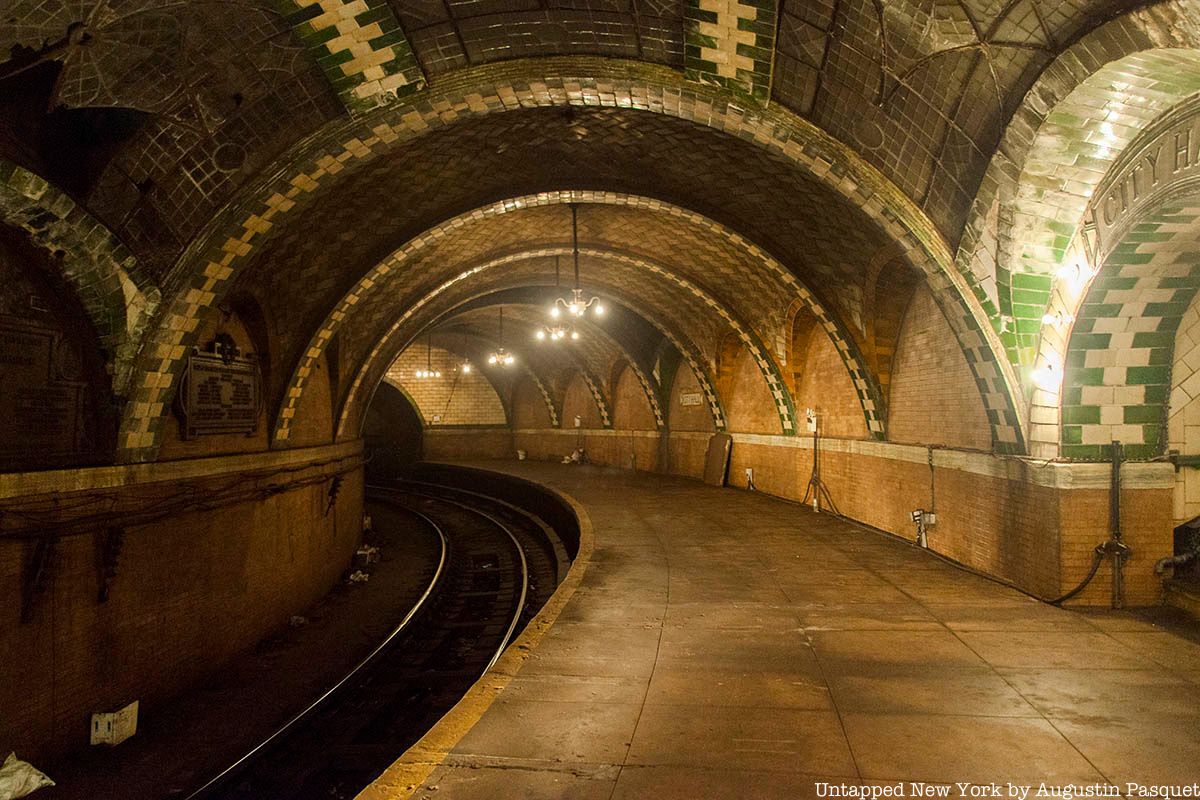 NYC’s decommissioned City Hall subway station
NYC’s decommissioned City Hall subway station
The IRT line, a private enterprise, was built for profit and was planned deliberately to be crowded (you hear that New Yorkers?). The line ran from the gorgeous now decommissioned City Hall subway station up to Grand Central Terminal, across Manhattan then north along Broadway to upper Manhattan. As Roger P. Roess and Gene Sansone write in The Wheels That Drove New York: A History of the New York City Transit System, “August Belmont steadfastly opposed subway expansion. The crowded subways represented healthy profits.” Belmont himself wrote, “‘If a day ever comes when transportation during rush hours is done without crowding the companies doing it will fail financially.” Expansion of the subway system came by way of competitor companies, which Belmont bought up quickly.
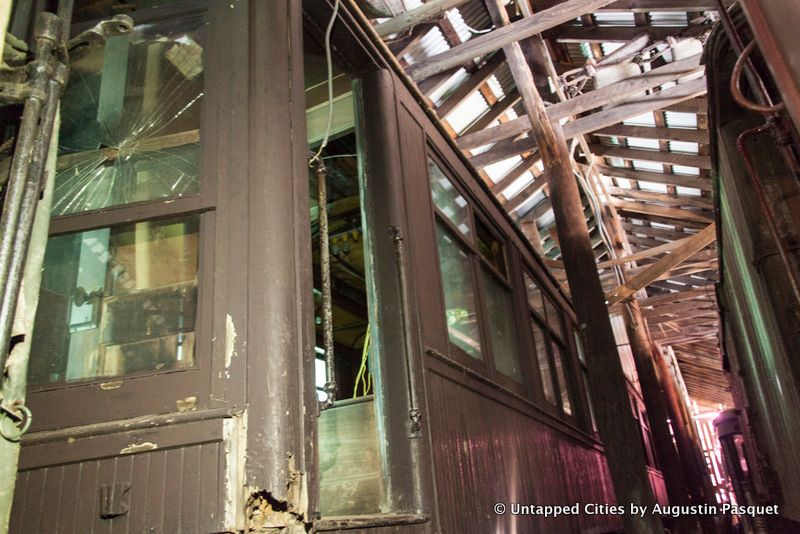
The Shore Line Trolley Museum, founded in 1948, operates a two mile right of way that was once run by the Branford Electric Railway, which opened in 1901. The East Haven Green, just down the street from the location of the museum today, was the eastern terminus of the New Haven streetcar system – all part of the Connecticut Company.
The museum, which has over 100 trolley and subway cars, once had 55 in operation before Sandy – the fruits of life-long rehabilitation work done by volunteer members. Only three train cars were working following Sandy. Thanks to funds from FEMA and private donors, they’re back up to 36. New storage facilities have been built, seventeen feet above the 500 year flood plain. The Mineola is still on the list for renovation, but funds are desperately needed. The museum is currently fixing over 130 motors and compressors, facing a time crunch from FEMA to get the trolleys back up and running, a priority over decorative aspects.
Getting to the Mineola is an adventure in itself. From the Sprague Station, the main building of the museum, you either walk along the trolley tracks or hop onto a working trolley headed towards the yards. We did a little of both. One of the barns was unlocked for us and we walked gingerly between two rows of old train cars, in almost total darkness.
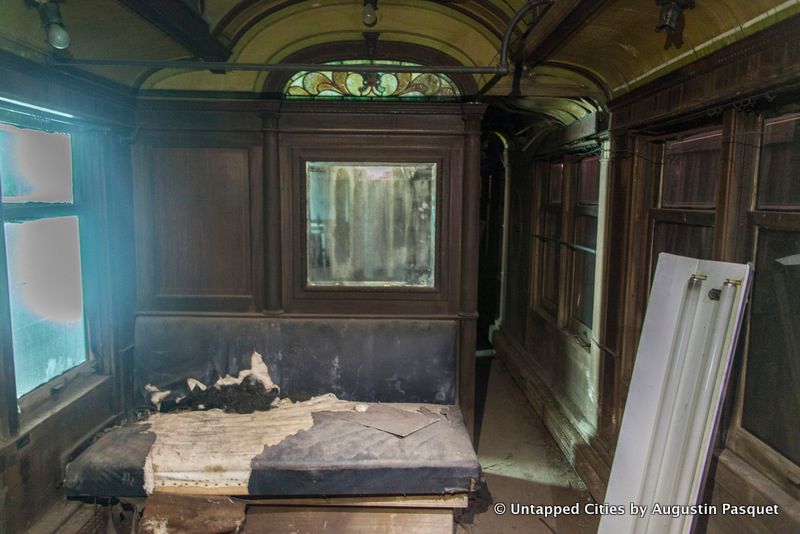
Nearly at the back of the barn you’ll find the Mineola. Stepping inside, you can easily see how grand this private subway car was. Belmont’s wife once wrote “A private railroad car is not an acquired taste. One takes to it immediately.” “It’s a show piece,” says Shaun Winton, director of the Shore Line Trolley Museum, “It’s obvious he was impressing people with this car.”
What’s incredible is that everything is still there, even though much has deteriorated over the years. The leaded Tiffany glass panels are intact, original light fixtures hang from the ceiling. In a kitchen cabinet, you can find the electrical system – knife switches – a 600 volt coffee urn, oven, and other cooking contraptions. There are even window shades, no longer able to move up and down. One of the best details: metal match strikers attached to the walls, placed conveniently all through the car for cigar lighting.
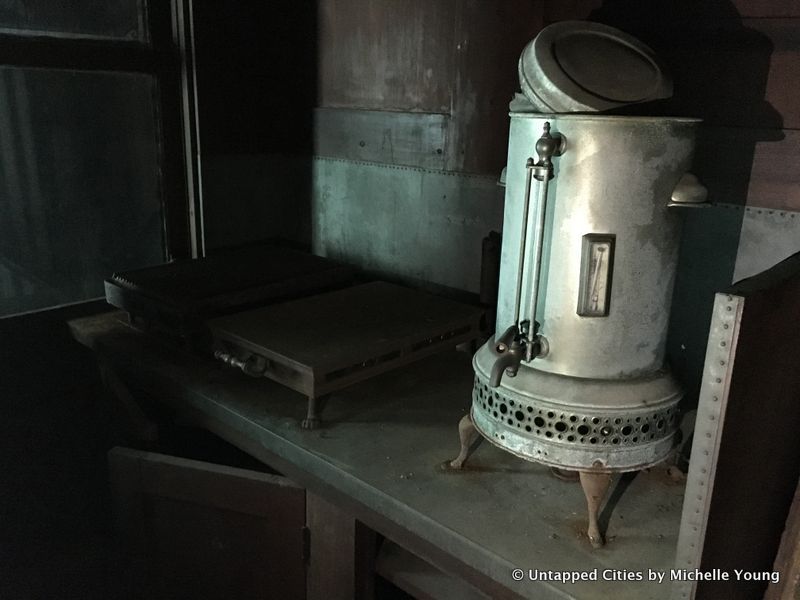
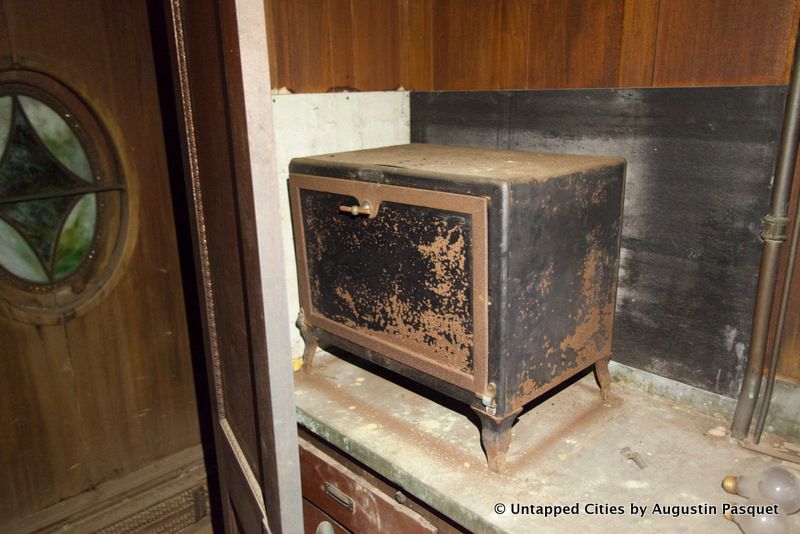
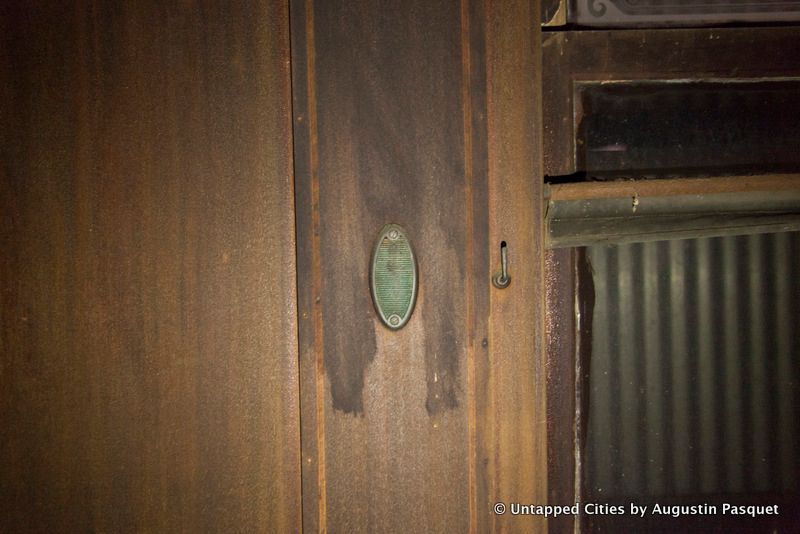
The type of mechanical on the train, in booths on the front and back of the car, was “one of the ways you would know this was an expensive car,” says Winton. The front space would have been outfitted with wicker chairs – “maybe four parlor chairs. Servants and employees would come and replenish your food and come through with cigars,” explains Winton. Above a couch is a railing where a curtain could have been pulled to allow for privacy.
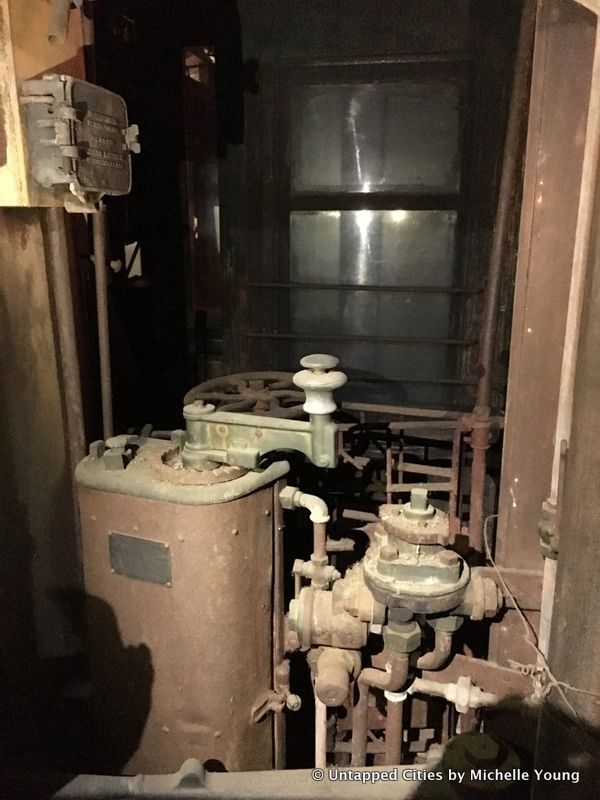
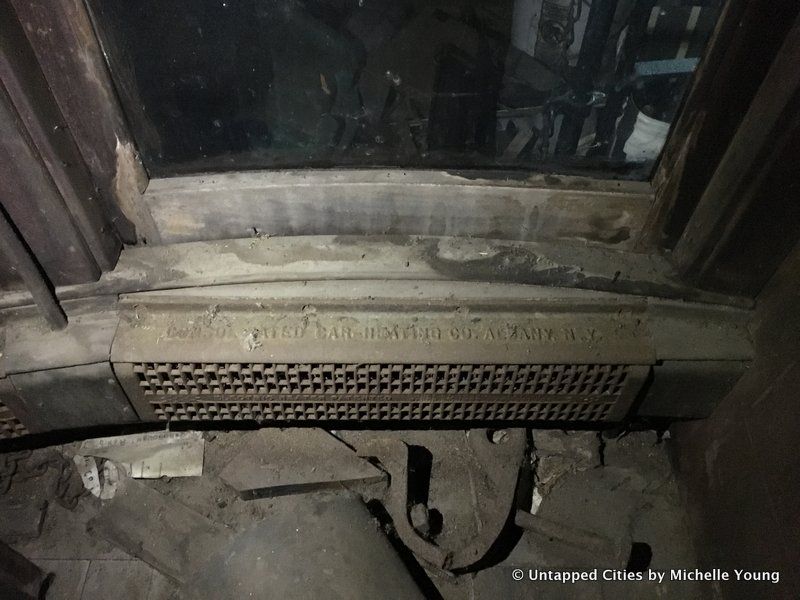
The leaded glass, seen above the wooden Corinthian columns and on side windows, “were all the range in New York at this time,” he explains. How all of this glass survived without damage is a miracle. A clerestory level, close to the top of the ceiling, has a line of ornamented windows for ventilation. Winton explains, “There was a big attempt in this era for health and purity…they were just figuring out germ theory. [These windows] were a public health initiative.”
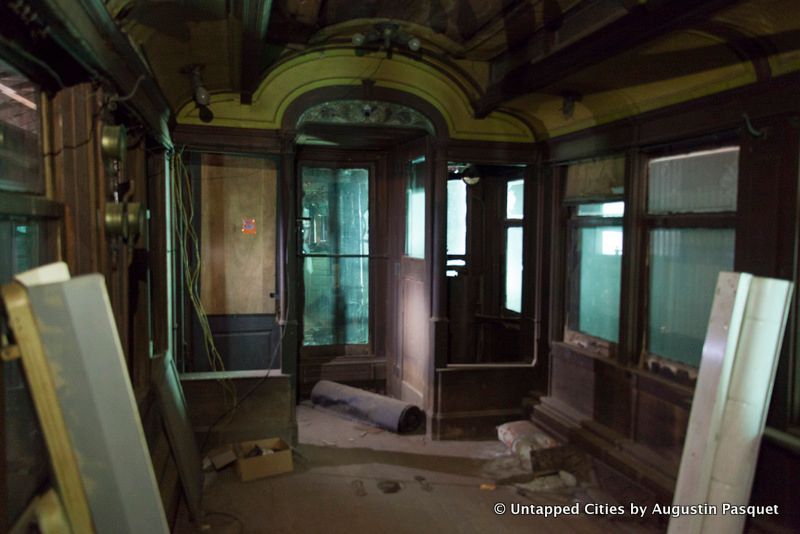
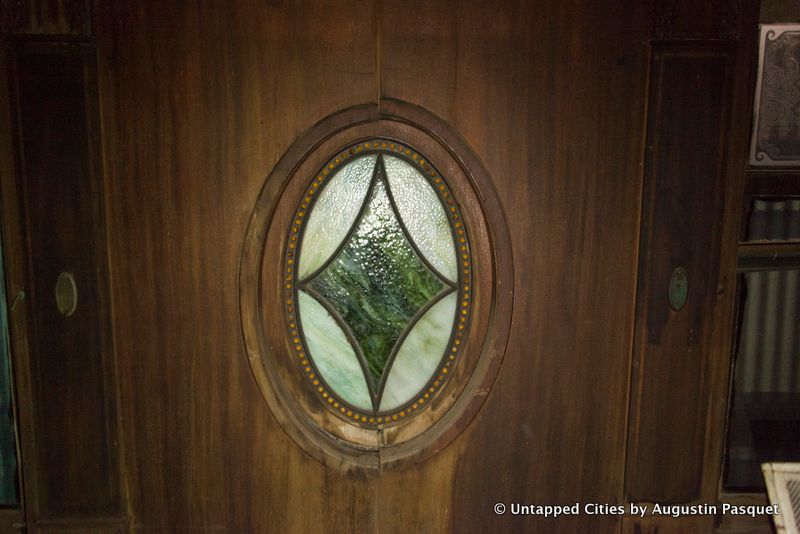
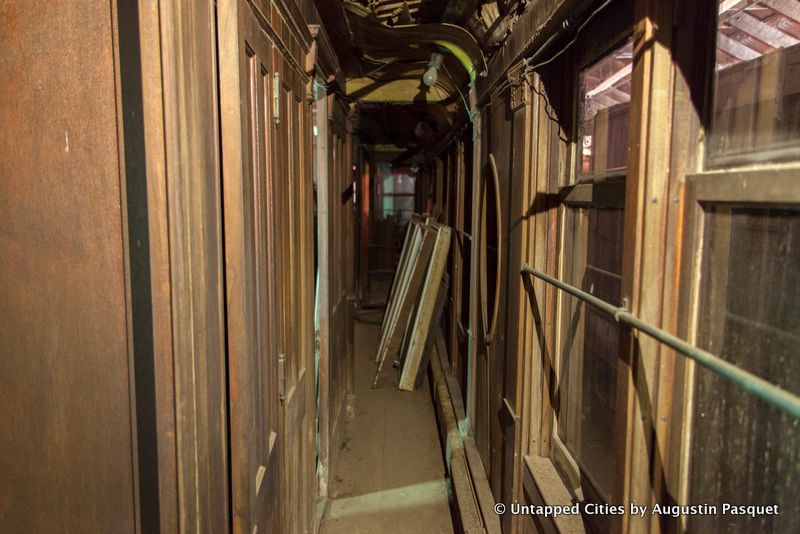
The bathroom has a water tank for drinking, mirror, and wooden lid toilet, some say flushed by sand.
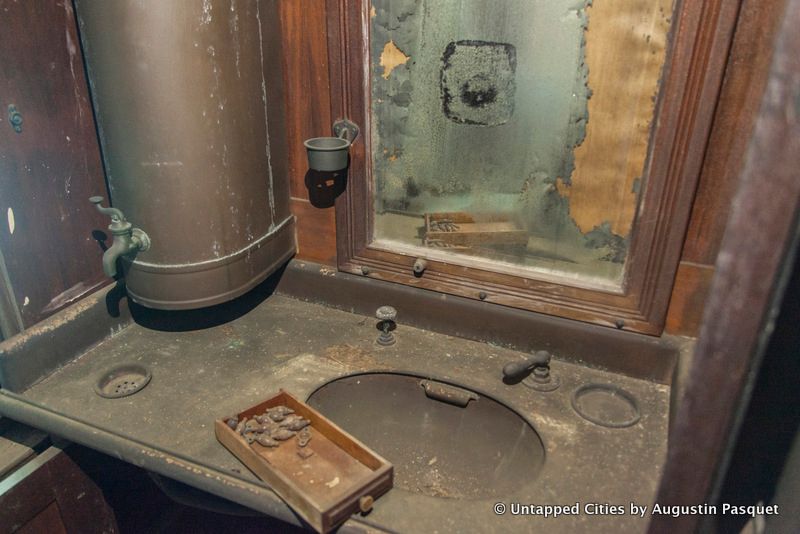
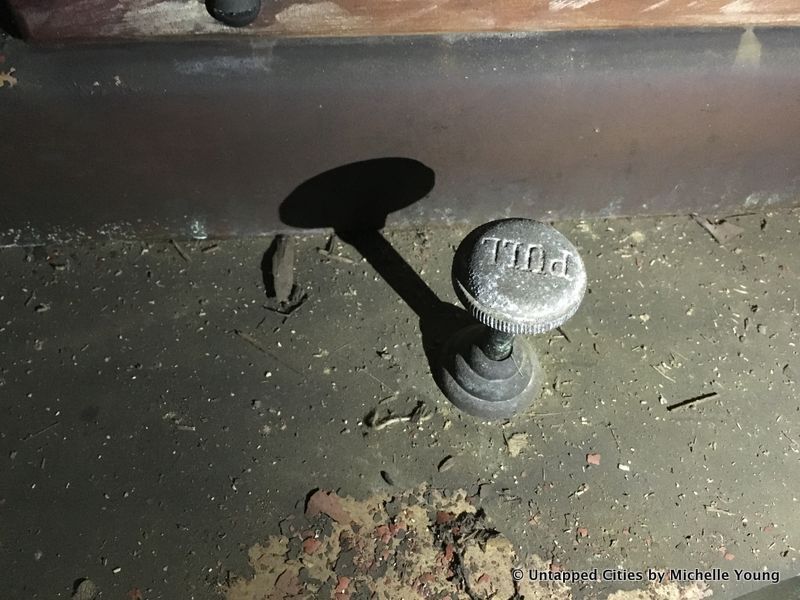
The servants call system in the kitchen has eight locations in the two compartment cab, including couch, toilet, and desk.
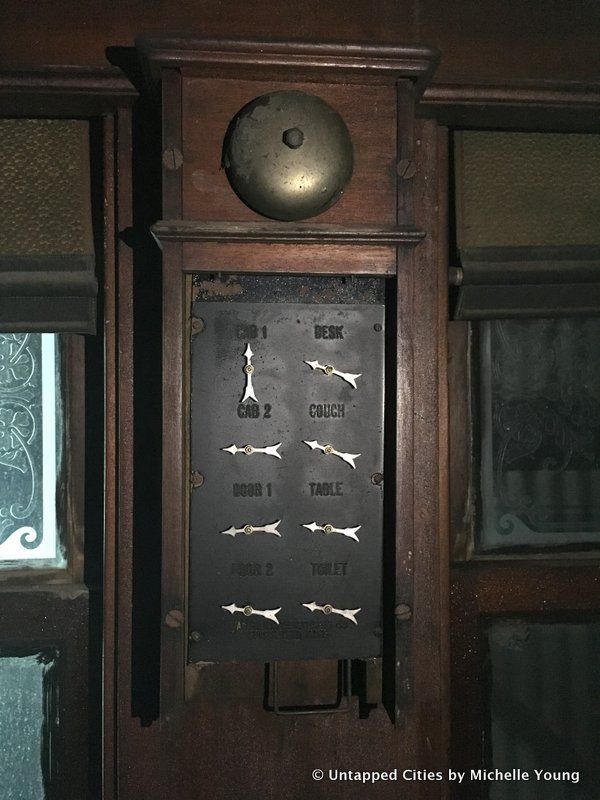
The desk itself, which once had a roll down cover and numerous drawers, still has its basic structure intact.
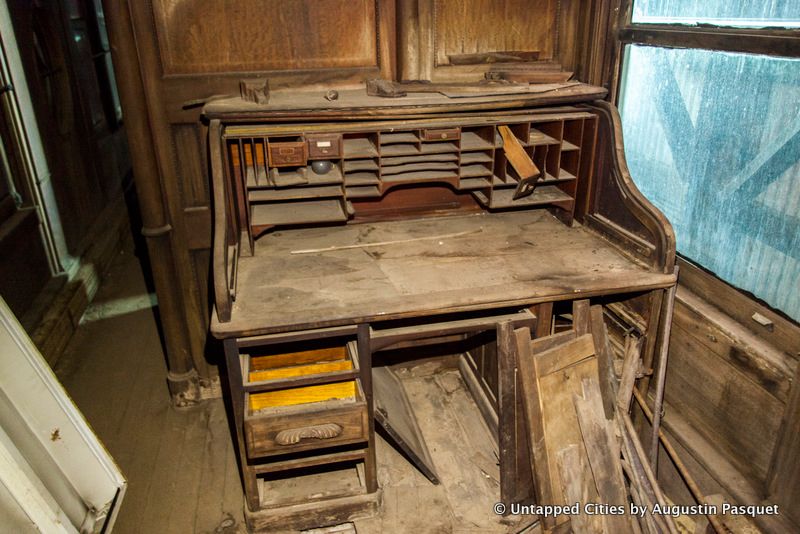
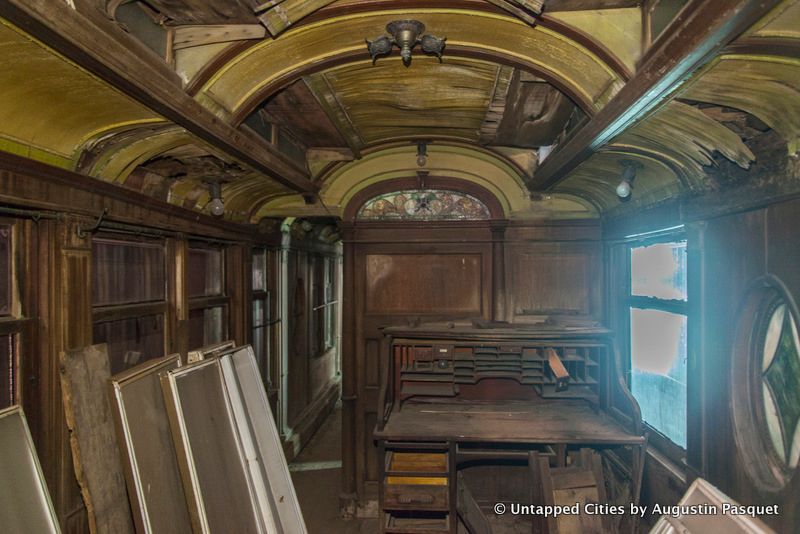
There are certainly people among the three hundred volunteer members at the Shoreline Trolley Museum who have the expertise to rehabilitate the interior of the Mineola. But the Museum hopes, if funds can be acquired, to ship the trolley out to renovate it all at once. “That’s what this car needs,” contends Winton.
Next, read about the secrets of the NYC subway and discover 10 fun facts about opening day of the NYC subway. Get in touch with the author @untappedmich.
Subscribe to our newsletter